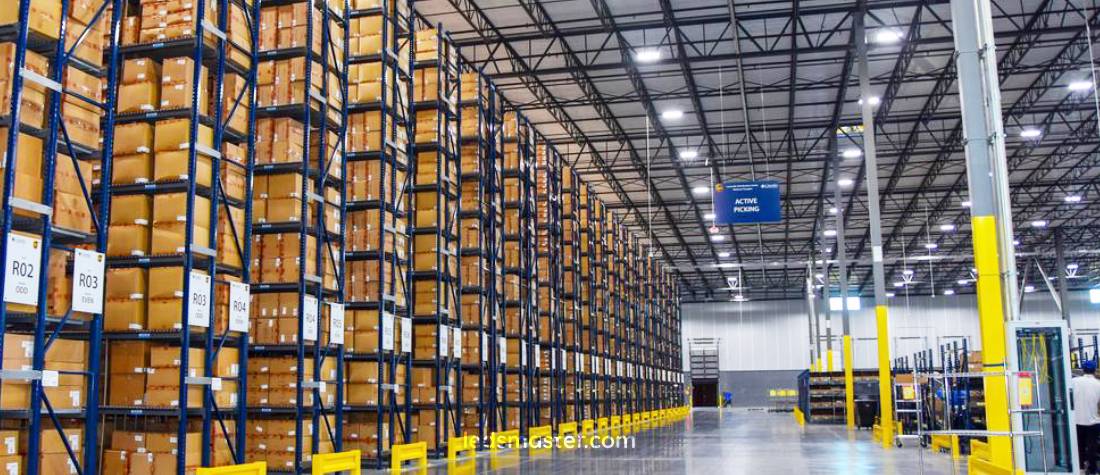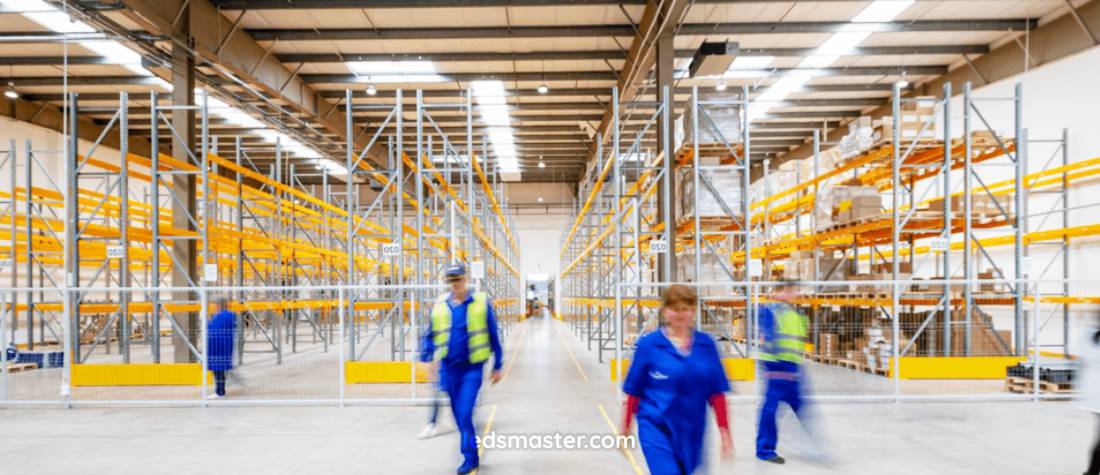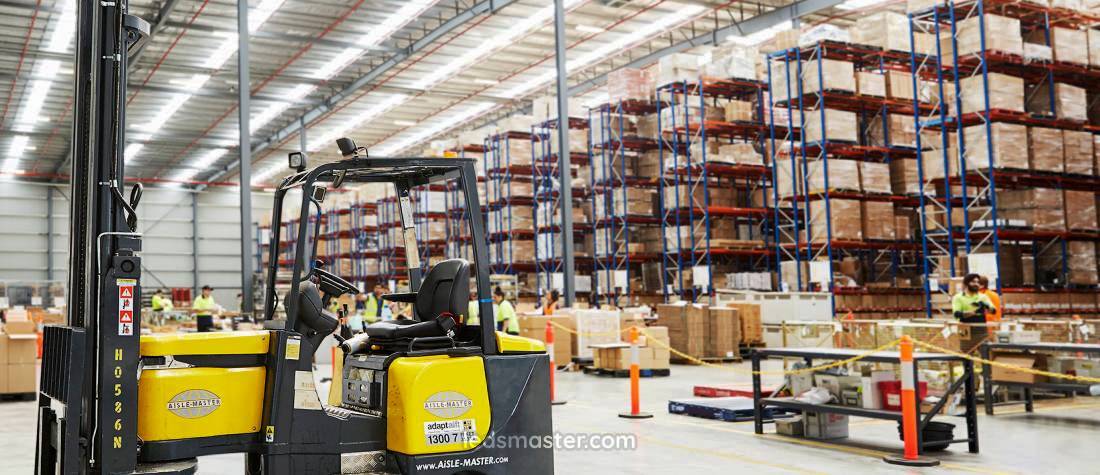In warehousing, effective lighting often goes unnoticed but greatly influences operational success. Upgrading outdated systems to modern, energy-efficient solutions boosts productivity and safety. By replacing old fixtures, warehouses can transform their environments, driving efficiency and creating a brighter future for operations.
Get your complimentary lighting design today
As businesses evolve, so do the demands for improved lighting solutions that not only illuminate but also enhance operational efficiency. Upgrading warehouse lighting is not merely an aesthetic decision; it serves a broader purpose, impacting everything from employee safety to energy consumption. Transitioning to modern lighting systems can lead to substantial improvements in various aspects of warehouse management, ultimately contributing to a more efficient and productive workspace.
Table of Contents
Toggle
Evaluating the existing lighting systems within a warehouse is a foundational step in determining the need for replacement. This assessment involves examining the types of fixtures currently in use, light levels, and the overall uniformity of illumination. Various lighting technologies may be present, ranging from outdated fluorescent fixtures to more contemporary options. Understanding the performance of these systems provides insights into areas requiring enhancement.
One of the primary considerations during this evaluation is the intensity of light produced by the fixtures. Adequate brightness is crucial for facilitating safe operations and promoting productivity. Dark spots or poorly illuminated areas can hinder visibility, leading to potential accidents and inefficiencies. Additionally, monitoring the energy consumption of current lighting systems can reveal discrepancies in performance, highlighting opportunities for cost savings through more efficient technologies.
Identifying problems within the existing setup is integral to crafting a strategy for replacement. Flickering lights, inconsistent brightness, and high energy costs are all red flags that indicate a need for modernization. By comprehensively assessing the current lighting conditions, decision-makers can lay the groundwork for an effective replacement plan.

Transitioning to a new lighting system offers various advantages that extend beyond mere illumination. Energy efficiency stands at the forefront of these benefits. Many warehouses still rely on outdated lighting technologies, which often consume excessive energy while providing inadequate brightness. By replacing these systems with LED technology, facilities can significantly reduce energy consumption, translating to lower utility bills over time. The longevity of LED fixtures further enhances these savings, as they require less frequent replacements and maintenance, contributing to overall cost efficiency.
Enhancing safety and productivity is another compelling reason for replacing warehouse lighting. Adequate visibility is paramount for the well-being of employees. Well-lit spaces not only reduce the risk of accidents but also promote a more focused and efficient work environment. When employees can clearly see their surroundings, they can perform tasks more effectively and with greater accuracy. This improvement can lead to increased output and a more harmonious workplace atmosphere.
Environmental considerations also play a role in the decision to upgrade lighting systems. Modern lighting solutions, particularly LED options, have a lower carbon footprint compared to traditional technologies. By minimizing energy usage and extending the lifespan of fixtures, businesses can contribute positively to sustainability goals. Many organizations are now recognizing the importance of aligning their operations with eco-friendly practices, and upgrading warehouse lighting is a straightforward step in that direction.
Selecting the appropriate lighting solutions for a warehouse environment is a multi-faceted process. Numerous options are available, each with its unique benefits and characteristics. LED high bay fixtures are increasingly popular due to their energy efficiency and long lifespan. These fixtures can provide even illumination across expansive areas, making them ideal for large warehouse spaces. Fluorescent fixtures, while once the standard, are gradually being phased out in favor of more efficient alternatives, as they tend to be less durable and consume more energy.
Smart lighting systems are also gaining traction within warehouse environments. These systems can adjust brightness levels based on occupancy and ambient light conditions, further enhancing energy efficiency. Implementing such technologies not only maximizes energy savings but also offers flexibility in lighting management.
When selecting new lighting solutions, several factors must be considered to ensure optimal performance. Brightness, measured in lumens, is a primary consideration. The level of illumination required may vary depending on the specific tasks performed within different warehouse areas. Additionally, the color temperature of the light can influence the overall atmosphere of the workspace. Cooler color temperatures may enhance alertness and focus, while warmer tones can create a more comfortable environment.
The design and installation requirements of fixtures are also pivotal in the selection process. Ensuring compatibility with existing infrastructure and considering the ease of installation will streamline the transition to new lighting. Control systems, including sensors and timers, offer added convenience and efficiency, allowing for automated adjustments based on usage patterns.

Developing a well-structured strategy for the lighting replacement process is crucial for successful implementation. Establishing a budget is the first step in this planning phase. Understanding the financial implications of upgrading lighting systems helps businesses allocate resources effectively and avoid overspending. By obtaining quotes from various suppliers and contractors, decision-makers can identify cost-effective solutions that meet their specific requirements.
Creating a timeline for the implementation process is another essential aspect of planning. Coordinating the timing of installation to minimize disruption to daily warehouse operations is vital. Scheduling the replacement during off-peak hours or over a weekend can help maintain productivity while transitioning to new lighting systems.
Engaging with lighting professionals can greatly enhance the planning process. These experts bring valuable experience and knowledge to the table, ensuring that the selected lighting solutions align with the unique needs of the warehouse. Collaborating with professionals enables businesses to benefit from insights into the latest technologies and best practices. Seeking recommendations and quotes from multiple vendors can also lead to informed decisions and optimal outcomes.
Conducting a cost-benefit analysis is vital for assessing the financial implications of lighting replacement. This analysis helps organizations understand the initial investment required for new lighting systems compared to the long-term savings they can generate. Upfront costs typically include the purchase of fixtures, installation fees, and potential upgrades to electrical systems. However, these costs should be weighed against the savings achieved through reduced energy bills, lower maintenance expenses, and extended fixture lifespans.
Incorporating financing options or incentives available for energy-efficient upgrades can also be beneficial. Many utility companies offer rebates or tax incentives for businesses that implement energy-saving technologies. By capitalizing on these opportunities, organizations can offset some of the initial investment costs, enhancing the overall financial viability of the project.
Calculating the return on investment (ROI) for the lighting replacement project provides additional insights into its financial viability. The ROI can be determined by comparing the savings generated from lower energy bills and maintenance costs against the initial investment. A positive ROI indicates that the project is financially sound and contributes to the organization’s bottom line.
In addition to direct financial benefits, considering intangible benefits such as improved employee satisfaction and safety should not be overlooked. Employees who work in well-lit environments may experience higher job satisfaction and productivity levels, leading to reduced turnover rates and associated hiring costs.
The decision to replace warehouse lighting encompasses various considerations, ranging from energy efficiency to safety and employee productivity. By thoroughly assessing existing conditions, choosing the right solutions, and implementing effective strategies for replacement, organizations can unlock a multitude of benefits. Embracing modern lighting technologies not only enhances the working environment but also contributes to cost savings and sustainability efforts.
Effective planning and execution of the replacement process are paramount in ensuring a seamless transition to new lighting systems. The subsequent maintenance and monitoring of these systems are equally important for maximizing their lifespan and performance. By adopting a forward-thinking approach to warehouse lighting management, organizations can create a brighter, more efficient future while supporting their operational goals and enhancing the overall work environment for employees.